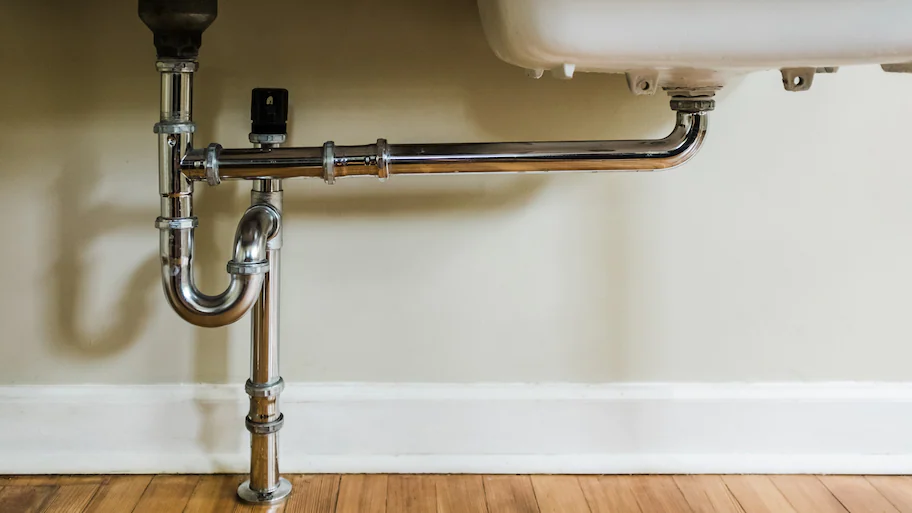The winter season brings picturesque landscapes and cozy nights by the fireplace, but it also brings the potential for frozen pipes, a common concern for homeowners. Frozen pipes occur when water inside them freezes, expanding and exerting pressure that can lead to leaks or even bursts. Swiftly addressing frozen pipes is crucial to prevent damage to your plumbing system and avoid costly repairs. In this comprehensive guide, we will explore the root causes of frozen pipes, recognize the signs, implement preventative measures, and provide step-by-step solutions for safe and effective thawing.
Understanding the Causes of Frozen Pipes:
Frozen pipes can be attributed to various factors. Sub-zero temperatures are an obvious culprit, but inadequate insulation and drafts can exacerbate the problem. Understanding these contributing factors is crucial for implementing effective preventative measures.
In regions where winters are particularly harsh, it’s not uncommon for water supply lines to freeze due to prolonged exposure to freezing temperatures. Additionally, pipes located in unheated areas of a home, such as basements, crawl spaces, or attics, are more susceptible to freezing.
Identifying the Signs of Frozen Pipes:
Recognizing the signs of frozen pipes is paramount for early intervention. Reduced water flow, strange odors emanating from faucets, or visible frost on the exterior of pipes are indicative signs that should not be ignored. Acting promptly upon noticing these signs can prevent further complications.
Prevention is Key:
Preventing frozen pipes involves a combination of proactive measures. Adequate insulation is crucial, especially for pipes in vulnerable areas. Insulating pipes with foam sleeves or using heating tape can effectively shield them from extreme temperatures.
Sealing gaps in your home’s insulation, especially around windows and doors, can prevent drafts and help maintain a consistent indoor temperature, reducing the risk of pipes freezing.
Locating the Frozen Section:
When faced with frozen pipes, identifying the specific section is crucial for targeted thawing. Start by assessing visual cues, such as frost on the exterior of pipes. Additionally, observe which faucets or fixtures are affected to narrow down the frozen area.
Thawing Pipes Safely:
Various methods can be employed to safely thaw frozen pipes. A hairdryer, hot towels, heating pads, or space heaters are effective tools, but the choice depends on the severity of the freeze and accessibility.
It’s essential to apply heat gradually, starting from the faucet end and moving towards the frozen section. Avoid using open flames, as this can cause damage and pose a fire hazard.
Avoiding Common Mistakes:
While attempting to thaw pipes, homeowners must avoid common mistakes that can worsen the situation. Using open flames or applying excessive force can lead to further damage, including burst pipes. Patience and a systematic approach are key when dealing with frozen pipes.
Dealing with Burst Pipes:
In unfortunate instances where pipes have already burst, immediate action is crucial. Shut off the water supply to prevent further damage, address immediate leaks using buckets or towels, and seek professional assistance promptly.
Seeking Professional Help:
Knowing when to seek professional help is paramount. If DIY efforts prove unsuccessful or if there is extensive damage, reaching out to a licensed plumber is the best course of action. Professionals have the expertise and equipment to assess and address the situation effectively.
FAQs:
Q1: Can I use a blowtorch to thaw frozen pipes?
No, using an open flame can cause damage and poses a fire hazard. Stick to safer methods like a hairdryer or heating pad.
Q2: How long does it take to thaw frozen pipes?
The time varies depending on the severity of the freeze and the method used. It can take anywhere from a few minutes to several hours.
Q3: Should I leave faucets running to prevent freezing?
Yes, allowing a small, steady drip can help prevent pipes from freezing in extremely cold temperatures.
Q4: What’s the best insulation for pipes?
Insulating pipes with foam sleeves or using heating tape can be effective in preventing freezing.
Q5: Can I use hot water to thaw pipes?
While hot water can be effective, it’s essential to avoid extremes in temperature to prevent further damage.
Conclusion:
Successfully navigating the challenges of frozen pipes requires a proactive approach that combines preventative measures and safe thawing techniques. By understanding the causes, recognizing signs, and following proper procedures, homeowners can safeguard their plumbing systems during the winter months. In cases of extensive damage or unsuccessful attempts, seeking professional assistance is crucial to ensure the integrity of your plumbing system and protect your home from further harm. Remember, the key is early detection and swift, informed action.

A group of home improvement enthusiasts and bathroom design experts, combines in-depth knowledge and a shared passion to deliver engaging, informative content that guides readers through the world of bathroom innovation and style.

Leave a Reply